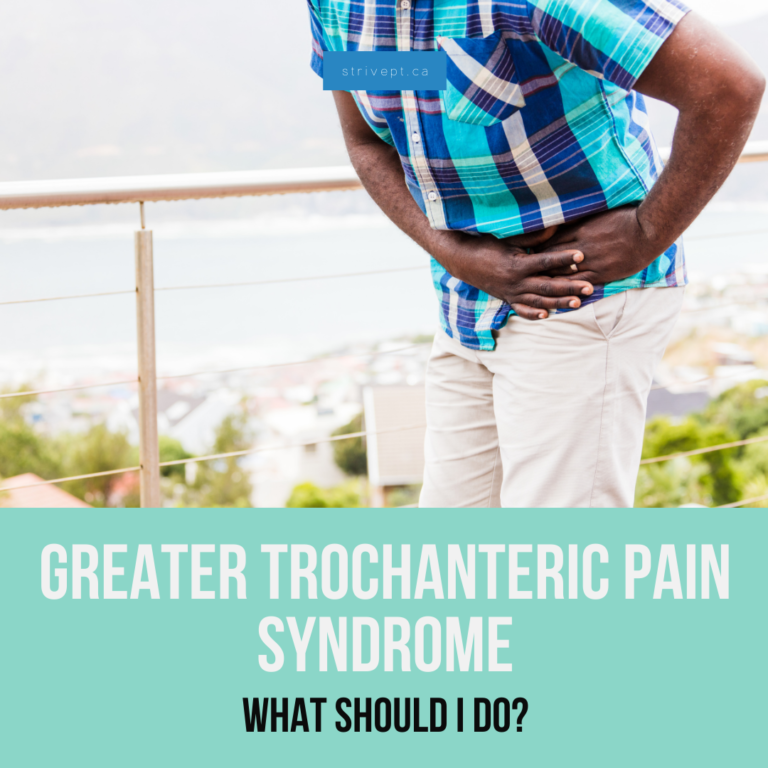
You start having pain on the side of your hip, seemingly for no reason at all!
Your symptoms may include pain over the greater trochanter, which is a bony protrusion on the outside of your hip.
It can feel more painful when lying on that side, climbing stairs, rising from a seated to a standing position, or prolonged walking or running.
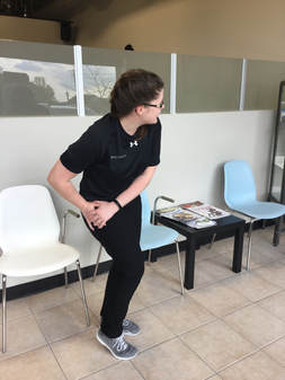
Let’s pause for a moment. What exactly does your “hip” even look like?
First, you have your femur (upper leg bone), which attaches to the pelvis through a ball and socket type of joint.
This allows your leg to move in many different directions! The greater trochanter is the bony bulge at the top of the femur, on the outside.
In other words, the bone you feel sticking out when you touch your hip joint. You can also see the location of a few bursa in the image below.
Bursa are fluid filled sacs which help reduce friction in the body – this makes movement easier!
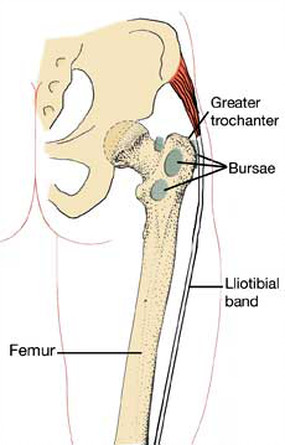
You also have many different muscles in this area which allow you to control the motion of these bones.
Many of these muscles either attach to, or run over the greater trochanter. Two important muscles here are the gluteus medius and the gluteus maximus.
The gluteus minimus attaches to the greater trochanter and is active when bringing your leg out to the side.
It also works to control your pelvis when standing, walking, climbing stairs, or pretty much any other movement on your feet!
Your gluteus maximus, however, passes over the greater trochanter but inserts nearby at the “IT” band (a tough band of tissue which runs down the side of your leg into your knee)
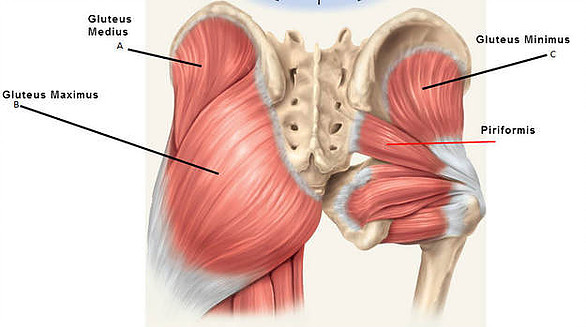
What is causing this hip pain? It could be Greater Trochanteric Pain Syndrome, which can result from irritation of a few different tissues. It can include injuries to the tendon of your buttock muscles which is sometimes called a “glute tendinopathy”.
It can also include irritation of one of the bursa that are in this area, which is sometimes called “trochanteric bursitis”.
In this case, if a bursa in the side of your hip gets irritated, it can cause pain with movement INSTEAD of making movement easier.
Because there are so many muscles, tendons, and bursa that either attach to, or run over the greater trochanter, when one gets irritated it can result in irritation of the others. The initial cause of this irritation can be from a hit to that area (ie. falling on your hip), long distance running, or weakness in your hip muscles.
Did you know?
This type of hip pain is most common in females, and recent studies have begun exploring associations between knee osteoarthritis that alters lower-limb biomechanics and Greater Trochanteric Pain Syndrome.
What can I do to help it feel better?
- Don’t sit with your legs crossed! While this is an ingrained habit for some people, it can worsen the symptoms when you have this condition. Instead, sit up straight with your knees bent to 90 degrees and your ankles in line with your hips and your knees.
- Avoid lying on that side – try sleeping on your back. If you can ONLY fall asleep on your side, try sleeping on your opposite side and use a pillow in between your legs to help ease your symptoms at night.
- Don’t try to “stretch” it away! Sometimes your instinct will to be to stretch it more and more and more, but this can actually increase the symptoms in the area. Any stretches you do should feel like a gentle stretching sensation and NOT cause your pain.
- Put a heating pad on your hip for 15 minutes per day. This can help decrease your pain and allow you to do your exercises efficiently and with ease.
What exercises can I start with to help my hip pain get better?
- Hip Rotations. You can start with gentle movements to help relieve pain at the hip. Motion is lotion! Start by lying on your back with your knees bent and then gently bring your knees over to one side, and then the other side. Repeat this 10 times, and perform this 3 times per day. Remember, this motion should not increase the pain you experience – if it does, don’t push quite as far.
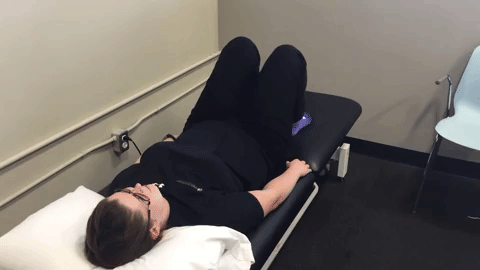
- Clamshells. You can also start strengthening your hip muscles by doing clam shells. At first, you will start with an isometric exercise, which means you won’t be moving your leg at all when you activate your muscles. Start lying on your opposite side, with your knees bent and a pillow between your knees. Then start lifting your top leg up away from the pillow, but stop before it actually lifts. Hold for 5 seconds, and then release. Repeat 10 times to start. As your strength increases, you may be able to remove the pillow, and start lifting your top knee up away from the other knee (while keeping your heels together).

These suggestions are just the first step to feeling better and decreasing symptoms.
To return to your full activity level, you will need a progressive exercise program to help strengthen the muscles in your hip without making your symptoms worse.
You may have to take a break from some activities that are making your pain worse, and slowly return back to them over time.
A physiotherapist can help guide you through this recovery process.
Do you have some hip symptoms that haven’t gone away?
Call us at 519-895-2020, or use our online booking tool on www.strivept.ca to book an appointment with one of our knowledgeable physiotherapists where they will perform an assessment and create a treatment plan for you.
Amanda McFadden, PT, BSc, MPT
Physiotherapist at Strive Physiotherapy & Performance